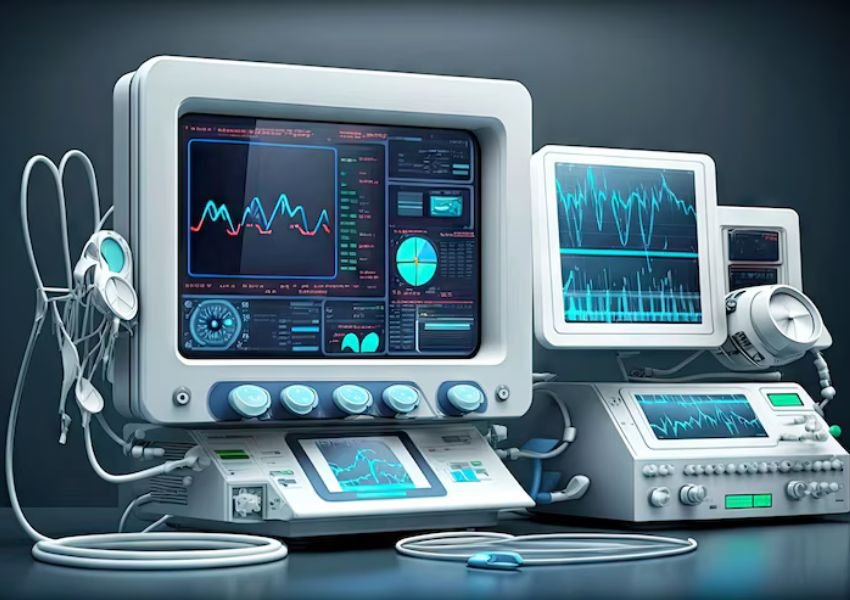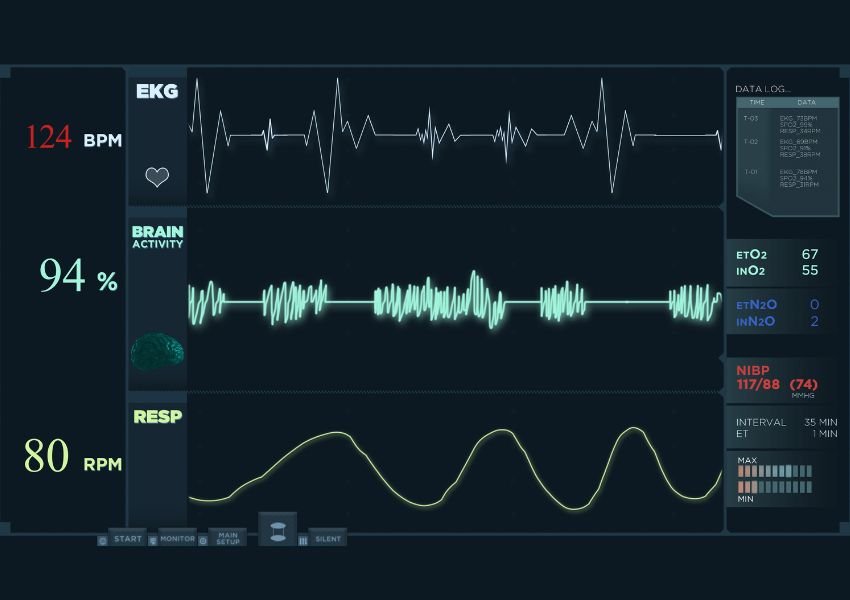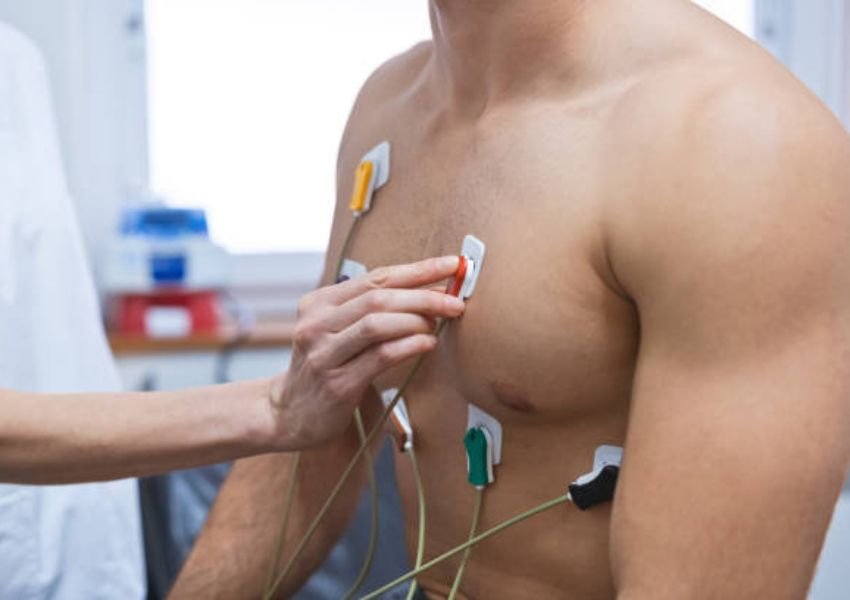- Mon - Sun 10 am - 2 pm
- Call Us: +91 99993 52085
- nitinkrortho@gmail.com

Electrocardiography, commonly known as ECG or EKG, is a non-invasive diagnostic tool used to assess the electrical activity of the heart. An ECG records the heart’s electrical signals and translates them into waveforms, which can be analyzed to detect various cardiac conditions. It is a vital procedure in cardiology, helping to diagnose heart problems, monitor heart health, and guide treatment decisions.
The process of performing an ECG is straightforward and painless. Small electrodes are attached to the patient’s skin at specific locations on the chest, arms, and legs. These electrodes detect the electrical signals produced by the heart as it beats. The signals are then transmitted to an ECG machine, which records them on paper or a digital display as a series of waves. Each wave corresponds to different phases of the heart’s electrical cycle, providing detailed information about the heart’s rhythm and function.
An ECG can be performed in various settings, including hospitals, clinics, and even at home using portable devices. There are several types of ECG tests, each serving a unique purpose. The most common type is the resting ECG, performed while the patient is lying down and relaxed. This test provides a snapshot of the heart’s activity at rest and is useful for detecting conditions like arrhythmias, heart attacks, and structural abnormalities.
Another type is the stress ECG, which is conducted while the patient exercises on a treadmill or stationary bike. This test assesses how the heart performs under physical stress and can reveal issues like coronary artery disease that may not be apparent during a resting ECG. Additionally, Holter monitoring involves wearing a portable ECG device for 24 to 48 hours to record the heart’s activity over an extended period, helping to detect intermittent problems that might be missed in a shorter test.



The information obtained from an ECG is invaluable for diagnosing a wide range of heart conditions. It can identify arrhythmias, where the heart beats too fast, too slow, or irregularly. It can also detect myocardial infarctions (heart attacks), indicating areas of the heart muscle that are not receiving enough blood flow. Furthermore, an ECG can reveal hypertrophy, where parts of the heart muscle are abnormally thickened, and electrolyte imbalances that can affect heart function.
The benefits of ECG are numerous. It is a quick, non-invasive, and inexpensive test that provides immediate results. This makes it an essential tool in emergency situations, allowing for rapid assessment and treatment of acute cardiac events. It is also a crucial part of routine check-ups for individuals with risk factors for heart disease, such as high blood pressure, diabetes, or a family history of cardiac problems.
Electrocardiography is a cornerstone of cardiac diagnostics, offering a window into the heart’s electrical activity. Its ability to detect and monitor a variety of heart conditions makes it an indispensable tool in both acute and chronic care settings. By providing detailed insights into the heart’s function, ECG helps healthcare professionals diagnose issues accurately, monitor treatment efficacy, and ultimately improve patient outcomes.